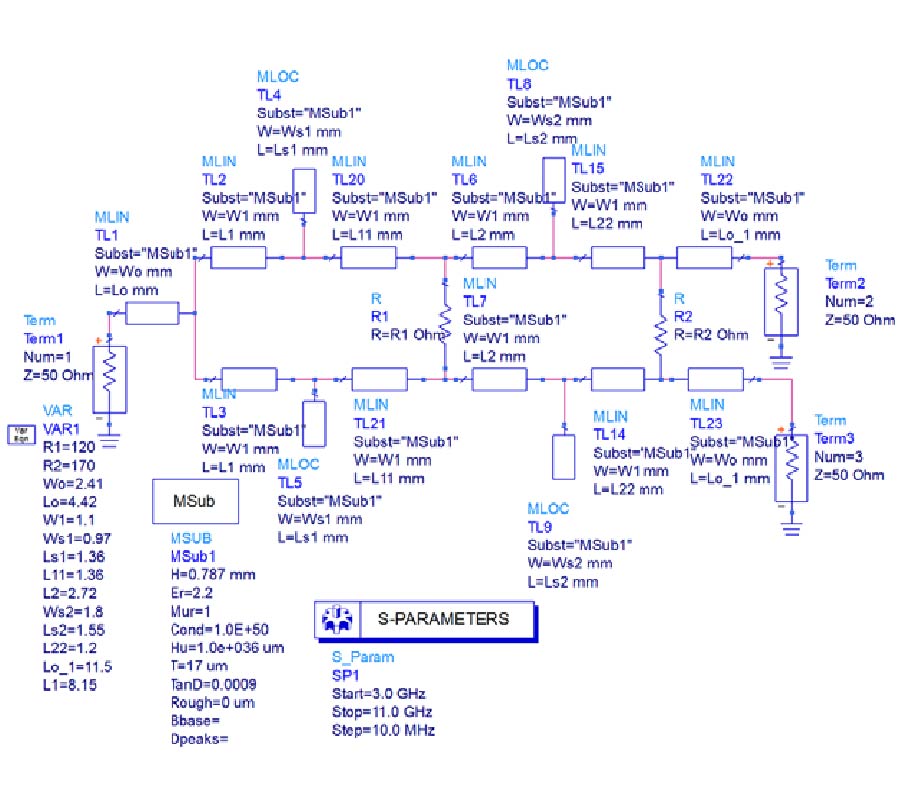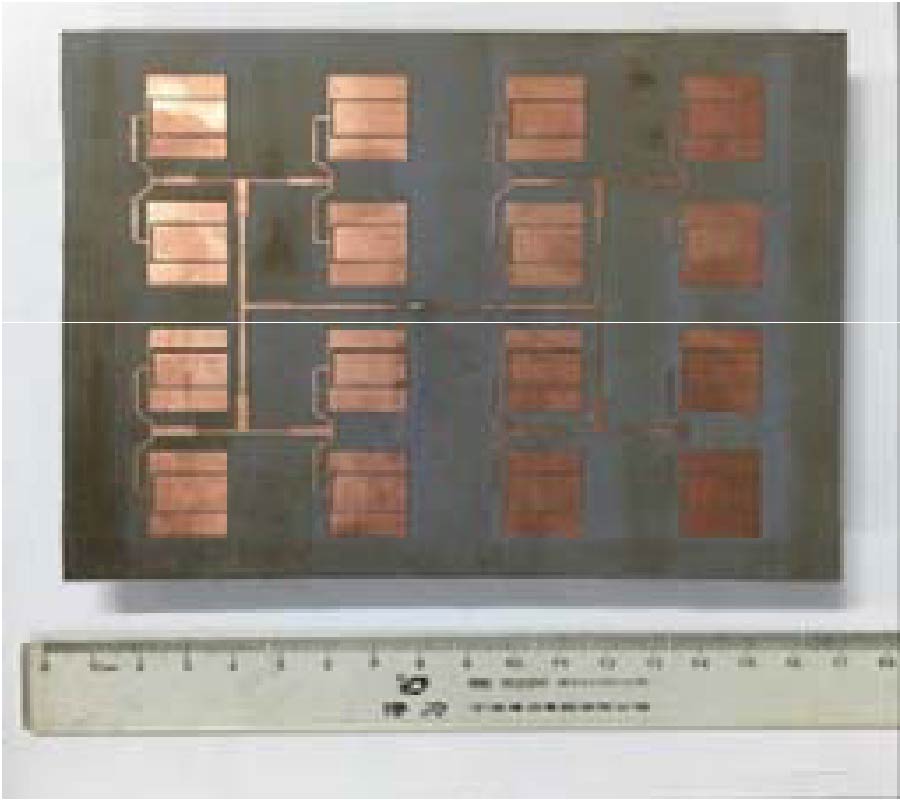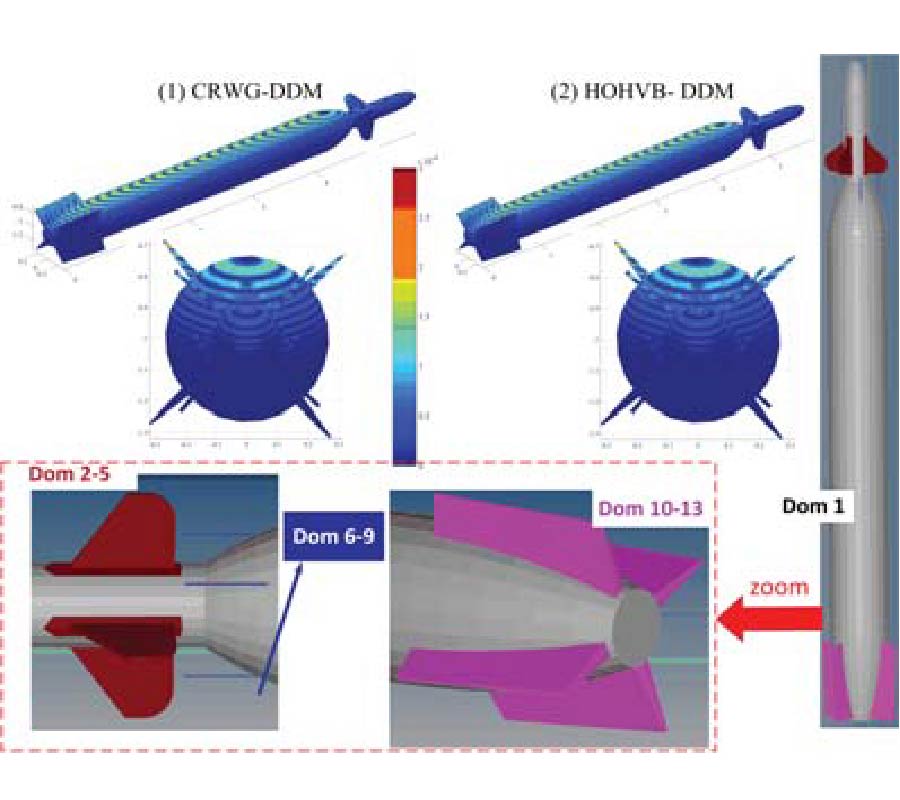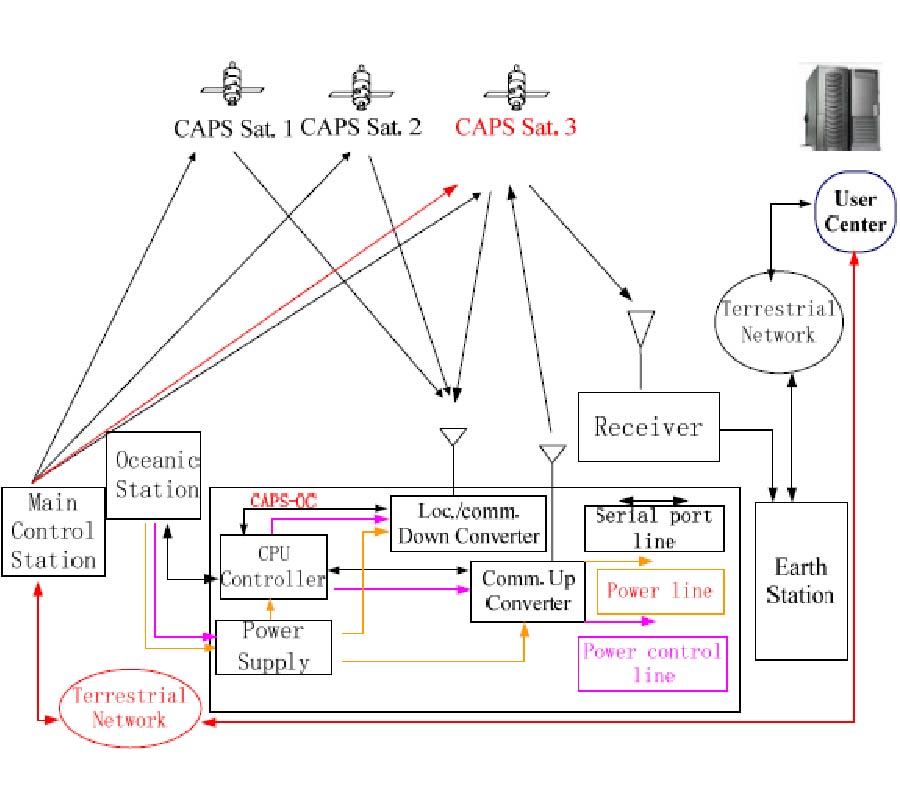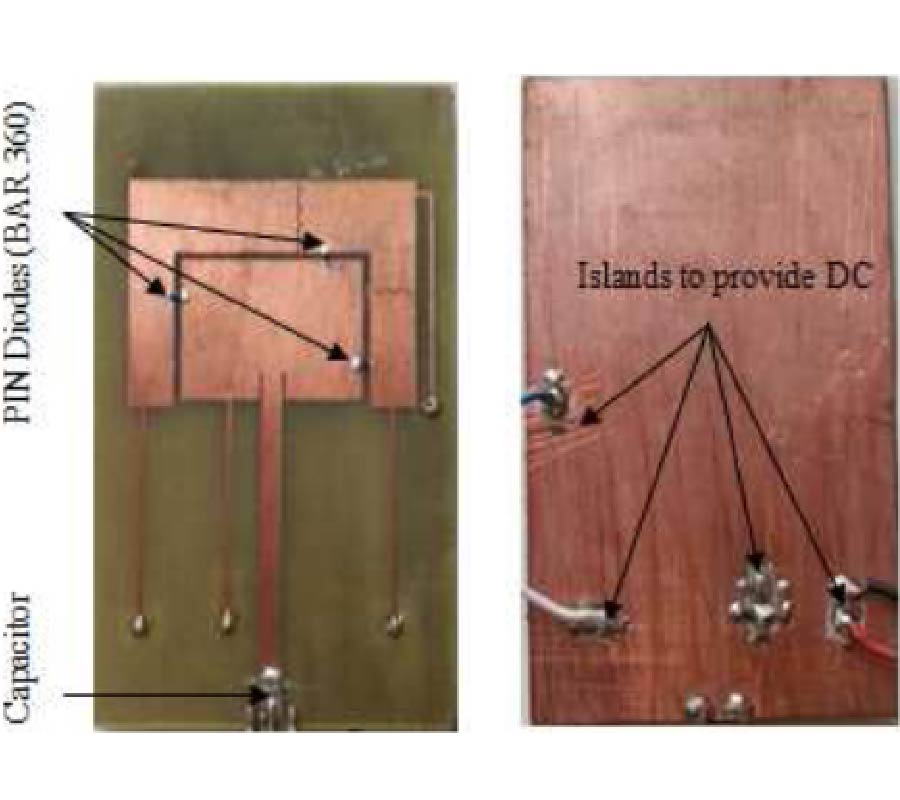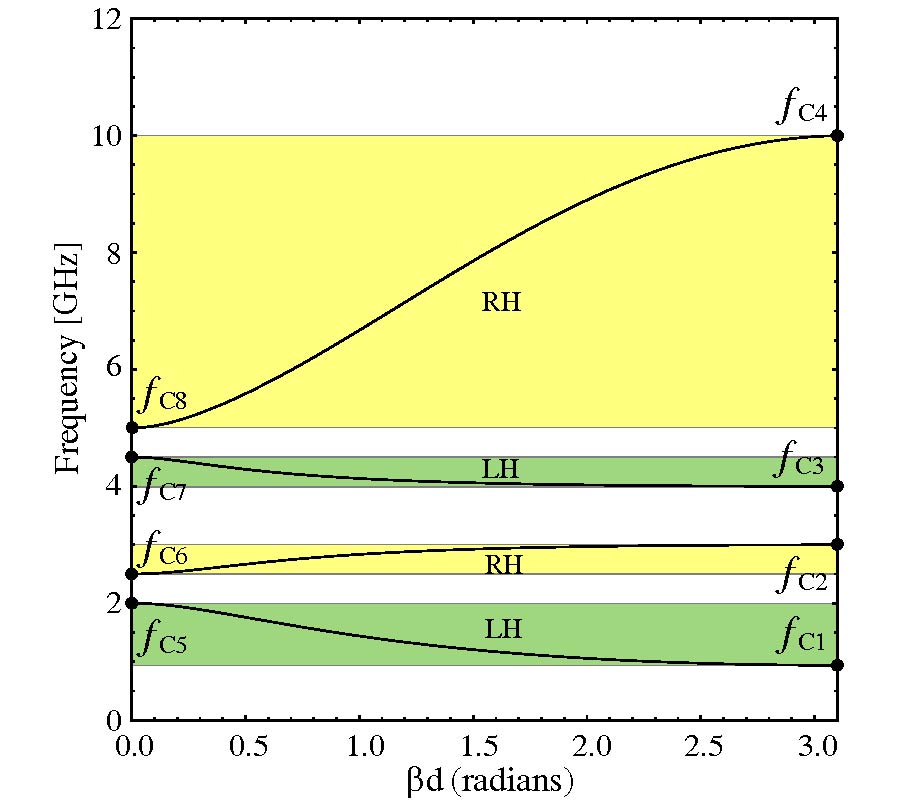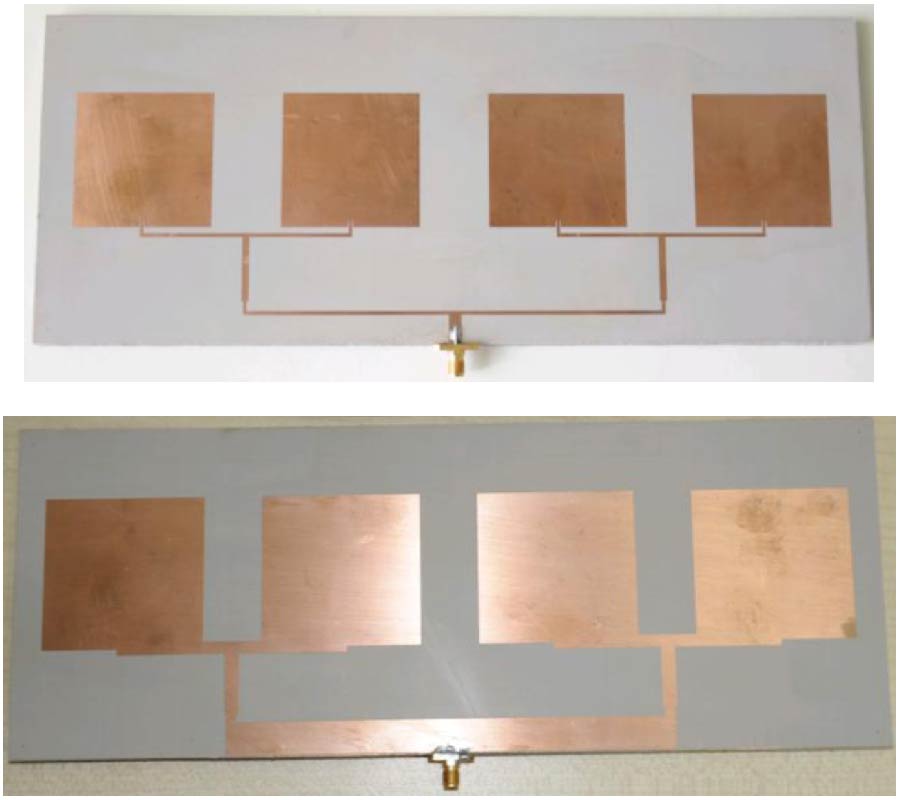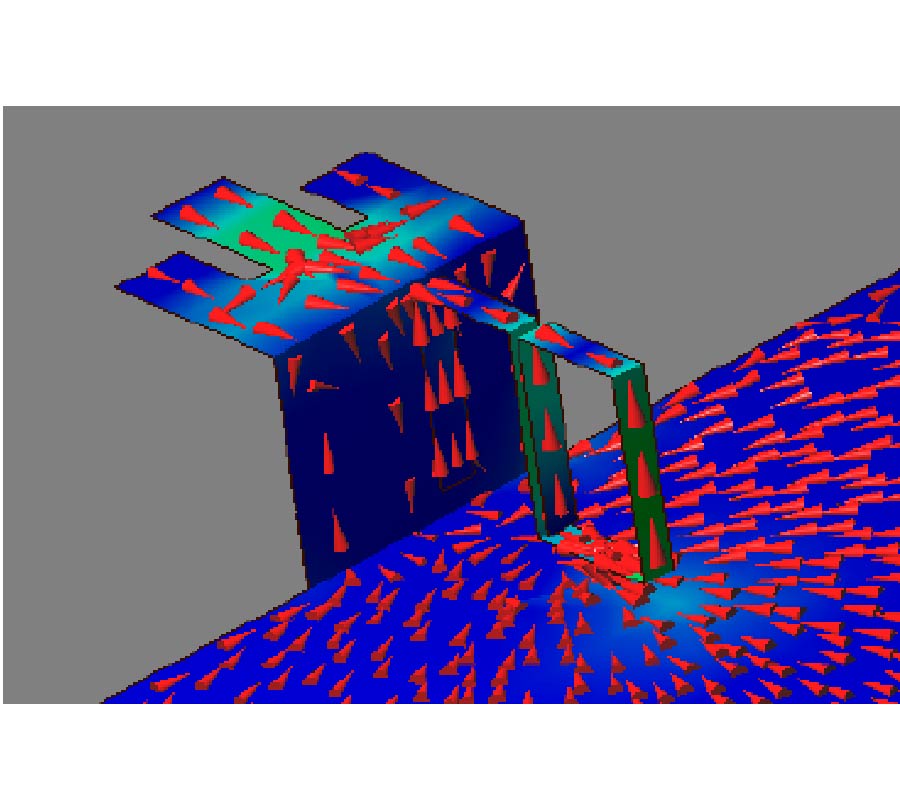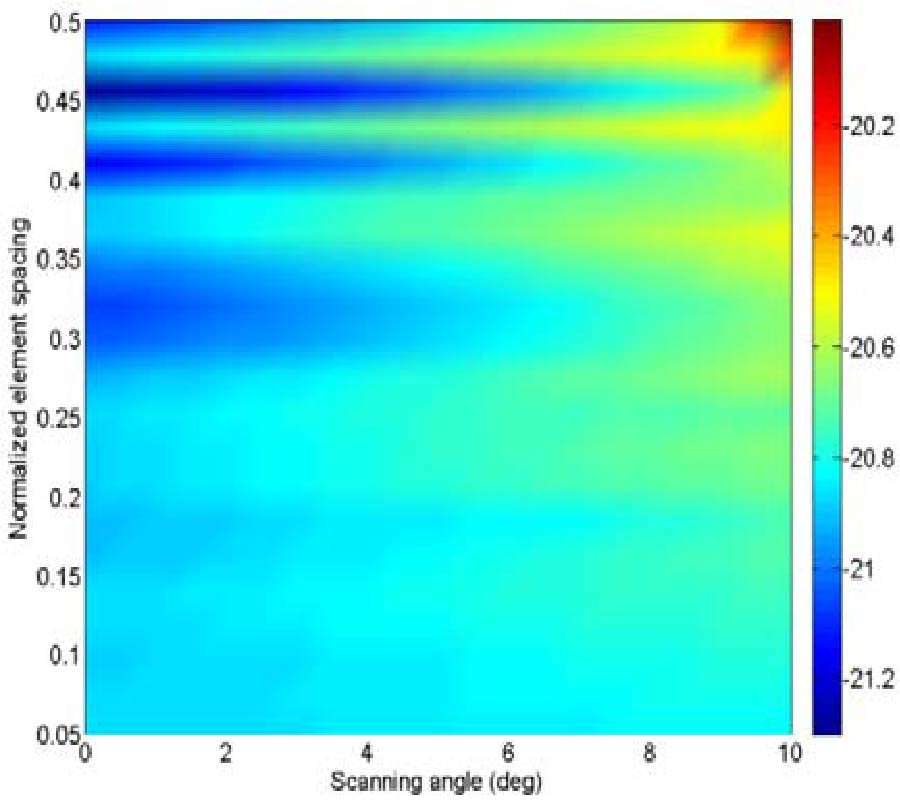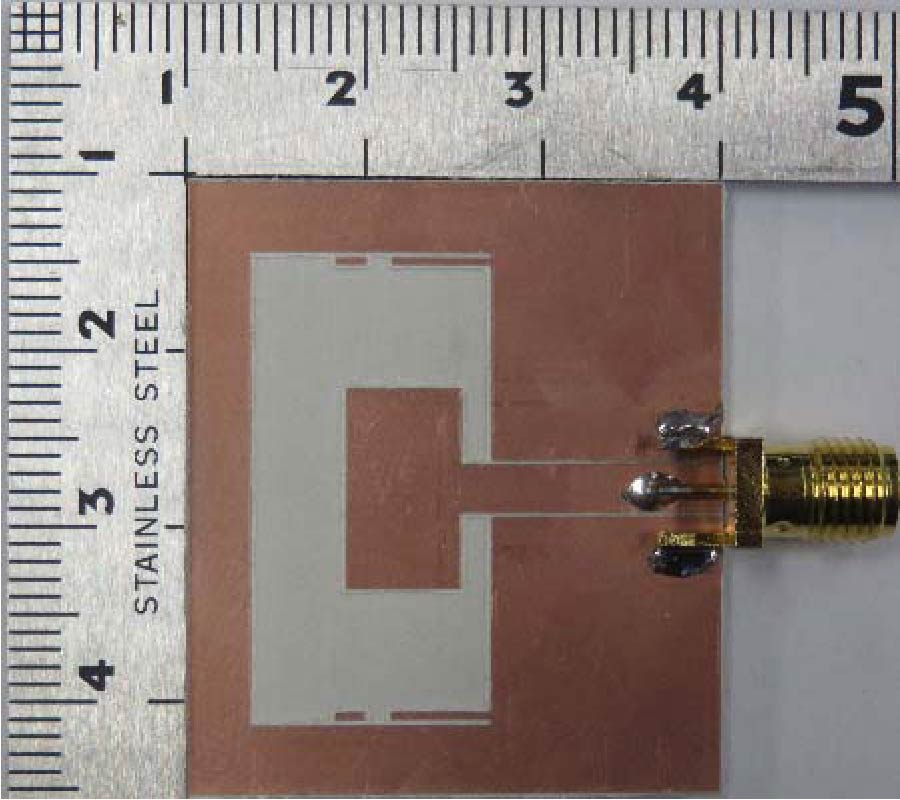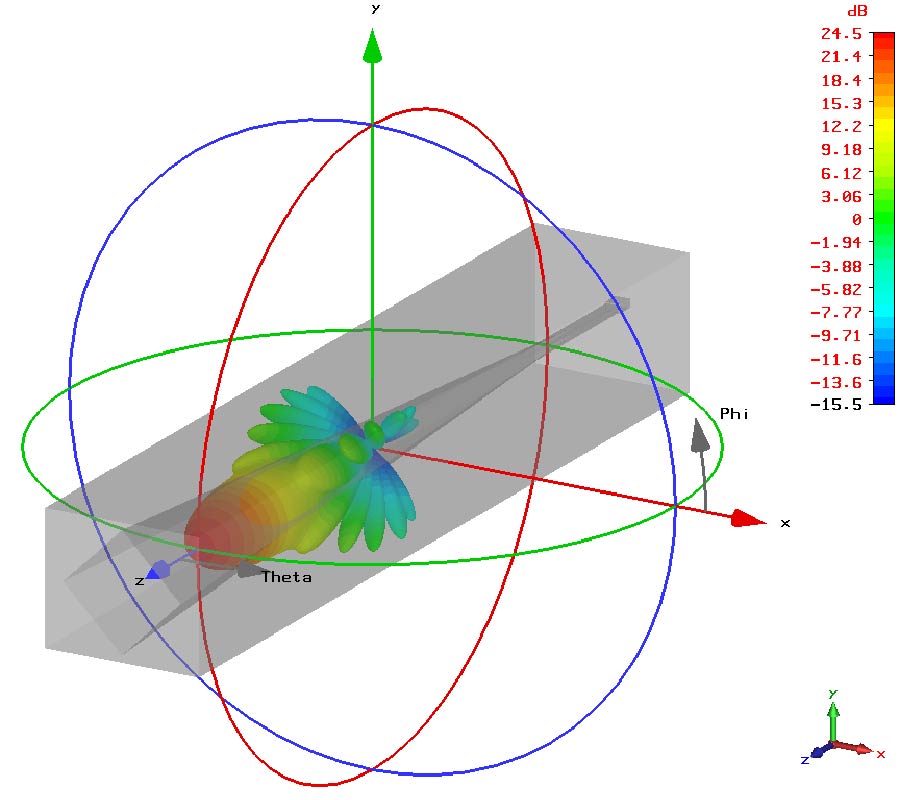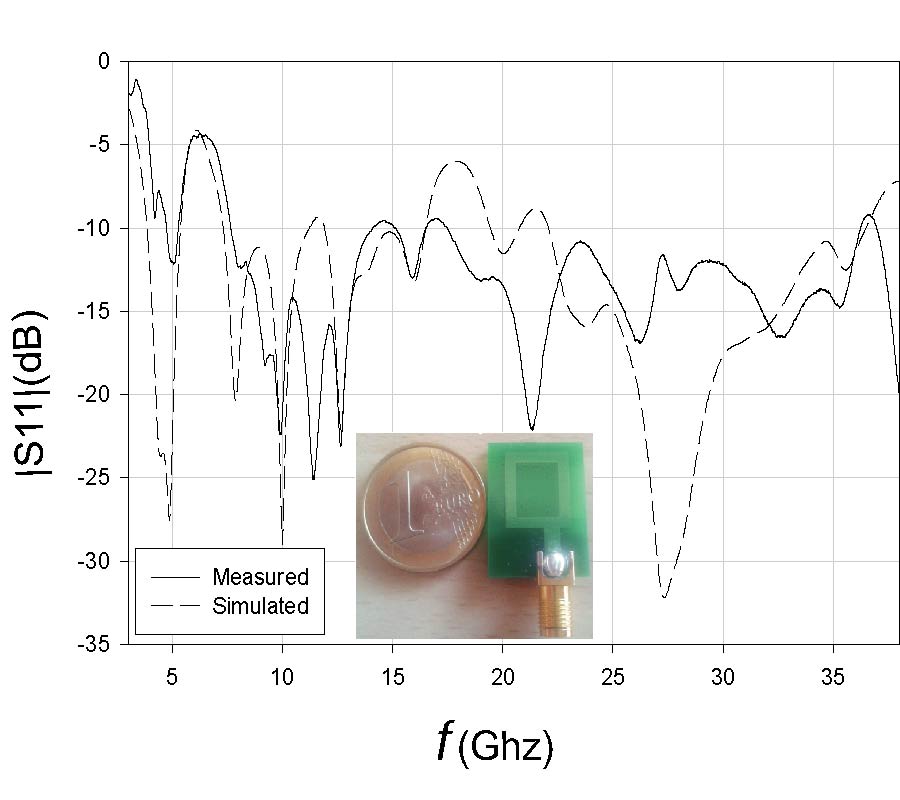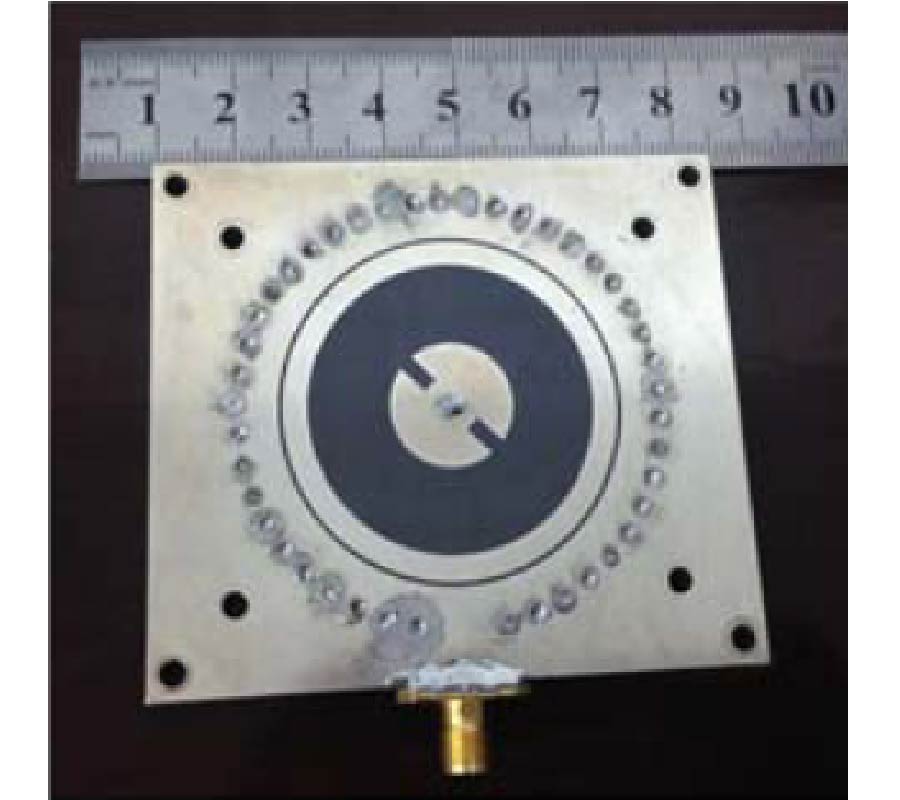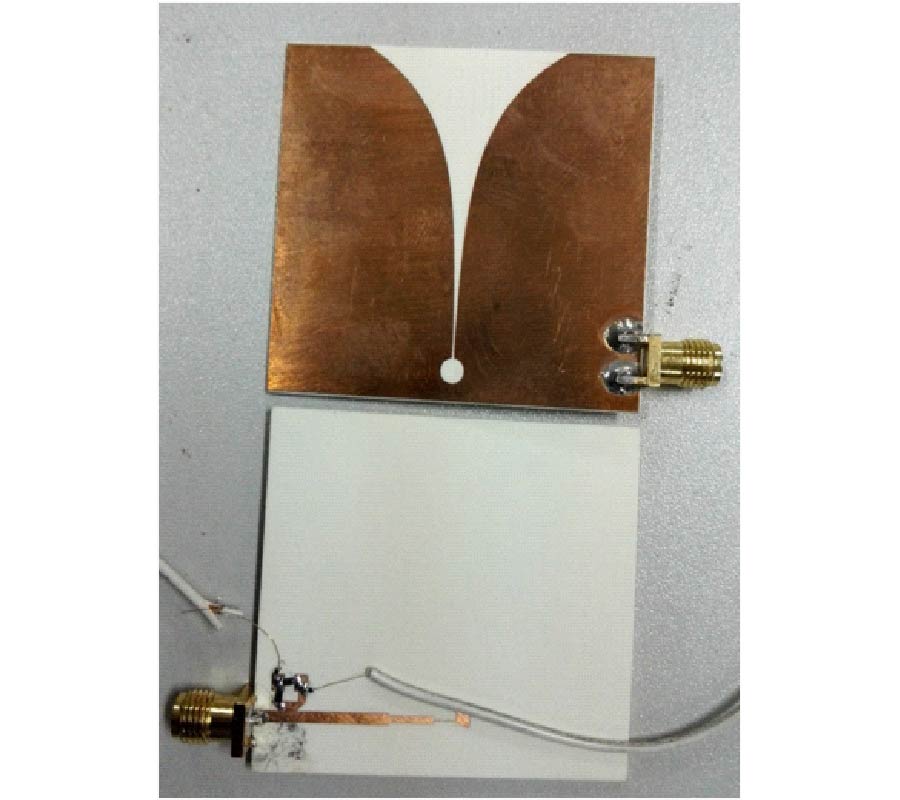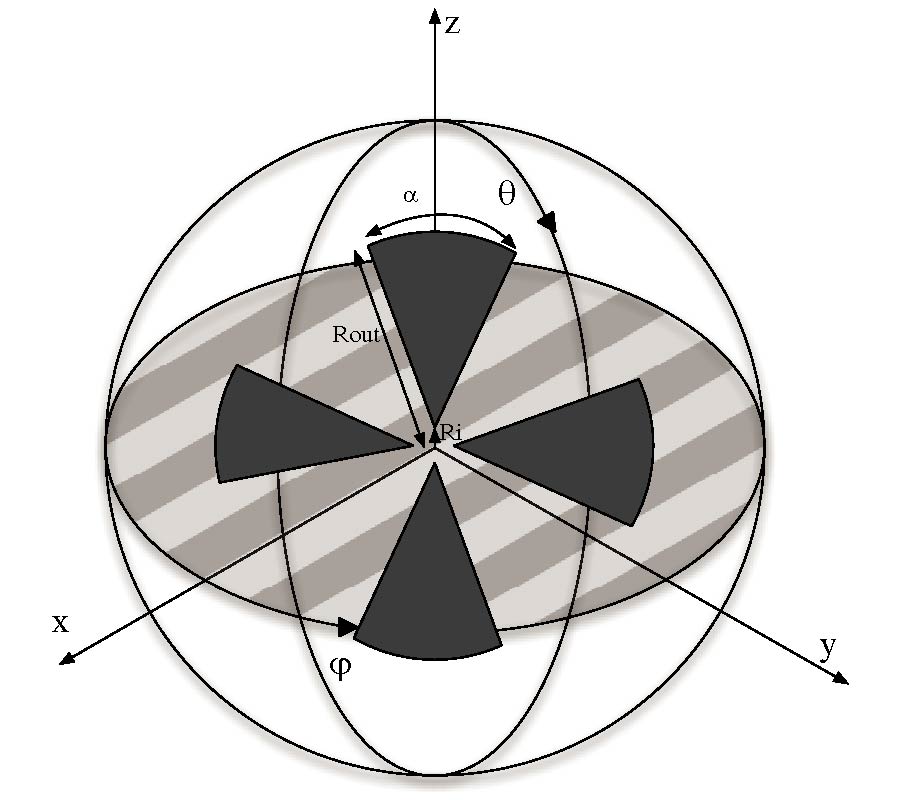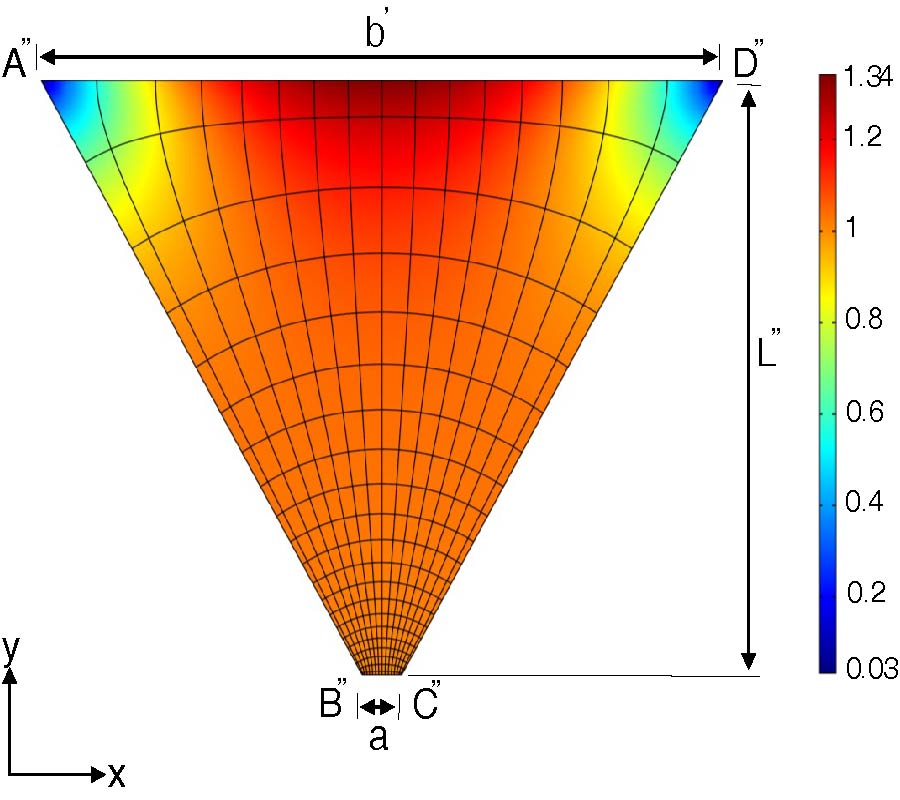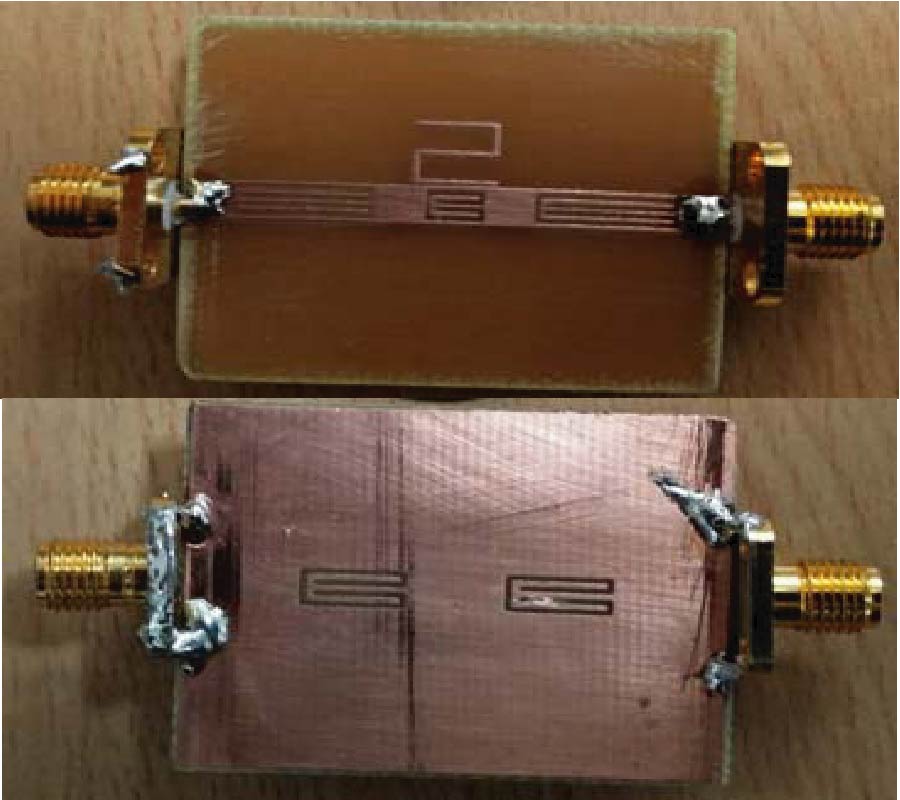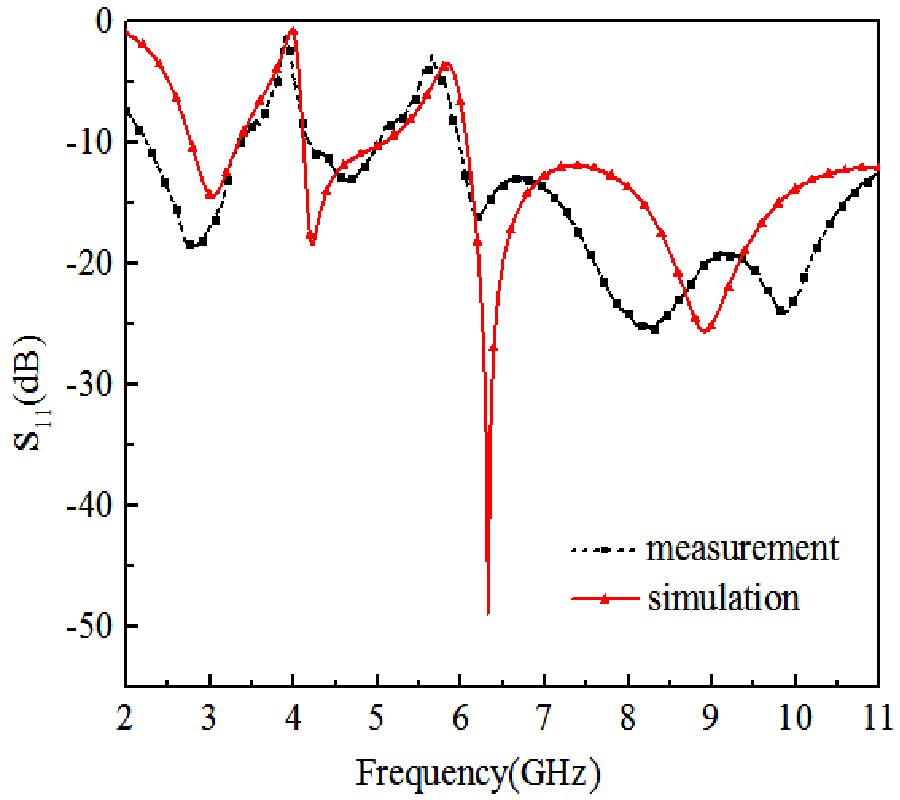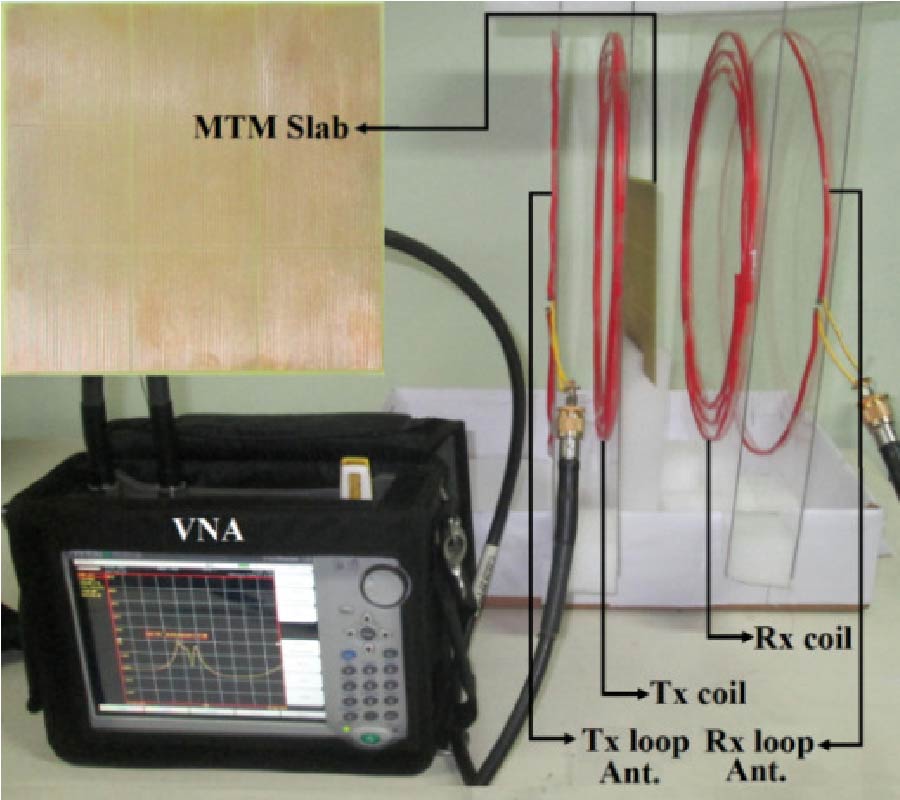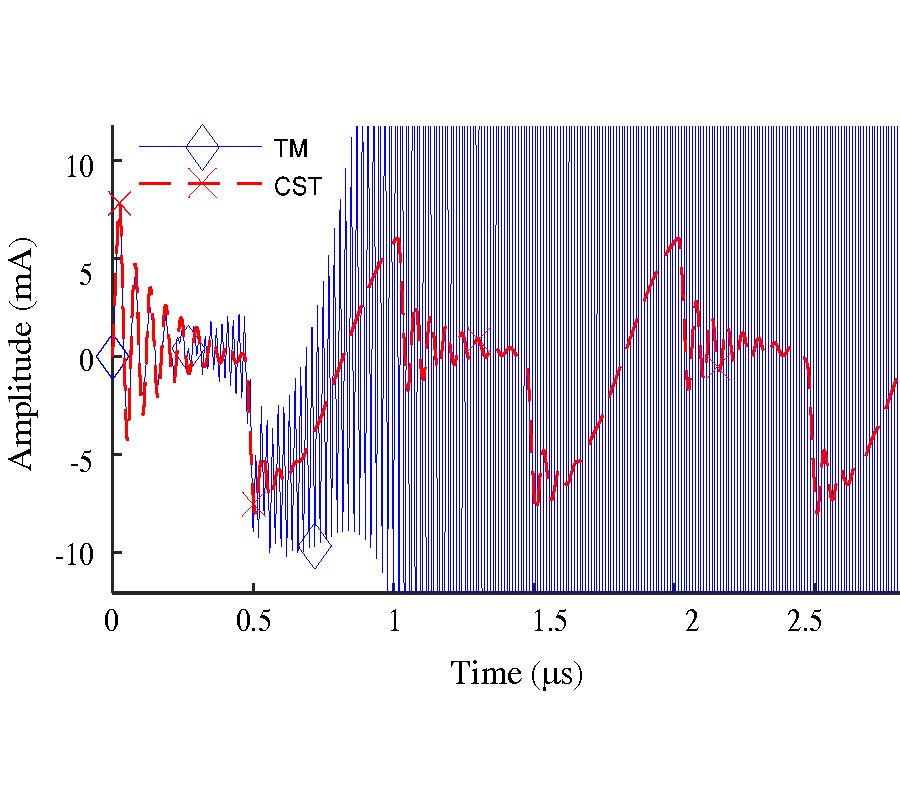Design of Single-Band to Hexa-Band Bandstop Filters
Ashwani Kumar,
Anand Kumar Verma,
Qingfeng Zhang,
Parmod Kumar,
Praduman Prasad Singh,
Rajendar Prashad Rishishwar,
Abhishek Singh,
Ankita Bansal and
Ritu
This paper presents a systematic design process to design Bandstop Filters from Single-Band (SB-BSF) to Hexa-Band (HB-BSF). The presented BSFs are useful to suppressing the unwanted signal frequencies from 1.98 GHz to 7.75 GHz. Single-Band BSF suppress the frequency 1.98 GHz; Dual-Band BSF suppress 2 GHz and 3.4 GHz (WiMax Band); Triple-Band BSF suppress 2.0 GHz, 3.4 GHz, and 4.75 GHz; Quad-Band BSF suppress 2.0 GHz, 3.4 GHz, 4.75 GHz, and 6.4 GHz; Penta-Band suppress 2.0 GHz, 3.4 GHz, 4.0 GHz, 4.85 GHz, and 6.75 GHz; however Hexa-Band suppress 2.0 GHz, 3.4 GHz, 4.2 GHz, 4.75 GHz, 6.5 GHz, and 7.75 GHz. The attenuation level for the suppressed frequencies varies from 19 dB to 62 dB, and the quality factor varies from 17 to 384.5. The simulated and measured results are presented to validate the design process. Such compact BSFs could be useful in modern communication systems to stop the potential interference of the unwanted signal frequencies in WLAN and UWB bands.
